What is a Food Web?
At its most basic level, a food web is a diagram showing who eats who (or what) in an ecosystem. Food webs can be extremely complicated, because there are lots of living things within one ecosystem, and organisms often eat lots of different things (like me…I like steak, but I also like tofu. Complex). To help make food webs a little easier to understand, take a look at this very simple one below:

Why all the arrows?
So just what does this diagram tell us? Well, first realize what the arrows stand for: the flow of energy from one living thing to another. Ok, energy is flowing from the dandelions to the snail and the rabbit. Wait, what? Remember that food is just a form of energy – chemical energy. Got it. Arrows = energy flow. Think of the arrow like a fork: the points of the arrow are like the tines of the fork. When you eat, you put the tines in your mouth – when the cat eats the bird, the arrow flows “into” the cat. But why does the bird have multiple arrows? Simple, both the fox and the cat eat birds. So what direction would the arrows flow between a food web that including me and steak?
The ultimate source of energy
So if I eat a cow, where did the COW get its energy? Grass. But grass can’t just create energy…in fact, energy can’t be created (that’s the 1st Law of Thermodynamics), it can only be converted. Grass, like all plants, is a very efficient solar energy converter (or more specifically, a producer. Or really more specifically, an autotroph. Or REALLY more specifically, a photoautotroph).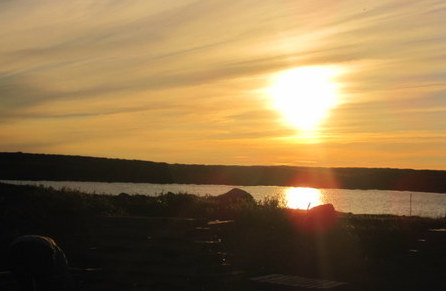
Some basic terminology
Every living thing has a particular place in a complex food web. To help keep track of each organism’s place, scientists assign them a name based on their trophic level (troph comes from the Greek word for food, so a trophic level is basically the level an organism feeds at). Plants and other organisms that photosynthesize are known as producerssince they ‘produce’ their own food. Organisms that eat producers are known as consumers (the reason here is obvious). Where it starts to get tricky is what level or consumer you are – if I eat tofu (soybeans), I am a primary consumer, but if I eat steak (cow), I am a secondary consumer … what if I was a zombie? What level would I be then?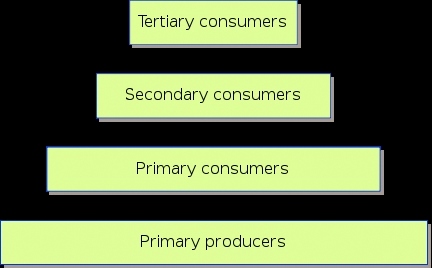
Complex Trophic Interactions
Ok, here’s where it gets good. There are other roles in food webs beyond producers & consumers. Remember decomposers and detritivores? And what about things like us – things that are sometimes called omnivores, or even opportunists? What about the wolf spider? Where does it fall? Take a look at the soil food web below and see if you can assign a trophic level to the wolf spider. Tricky, huh? It gets even trickier when you know that wolf spiders sometimes eat EACH OTHER when their population gets too large. Great form of population control, isn’t it?
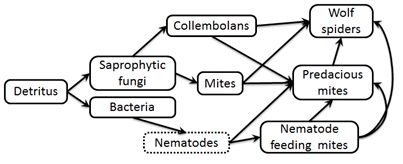
Just what DO wolf spiders eat?
Since we aren’t able to see what wild wolf spiders are eating, we have to take a look inside their stomachs to see what their most recent meal is. Problem is…arctic wolf spiders (there are about 15 different species, by the way) are SMALL. Like the size of a penny small. So you can guess that their stomachs are even smaller. We can make some assumptions about what they are eating based on the other organisms we find in the pitfall trap, but we have to use our good friend chemistry to help us make a more concrete determination (but still not really that concrete). Since all living things are made of the same basic elements, we can look to see the amounts of those elements in the spider remains to get an idea where they are positioned in the food web. The idea is that the more nitrogen we find (or actually, an isotope of nitrogen) in their systems, the more likely it is that they are eating at a higher trophic level (and more likely that they may be eating other spiders – turns out spiders contain more nitrogen (isotopes) than some of the organisms in the food web.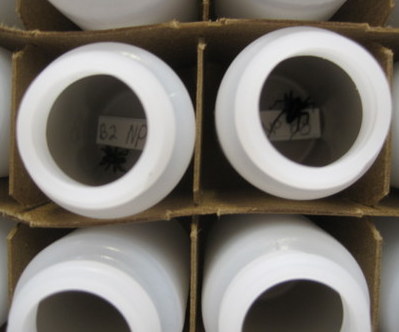
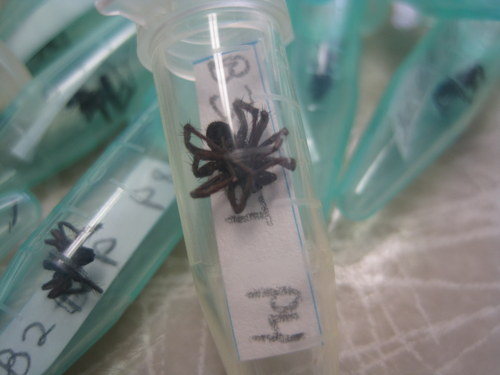


Comments